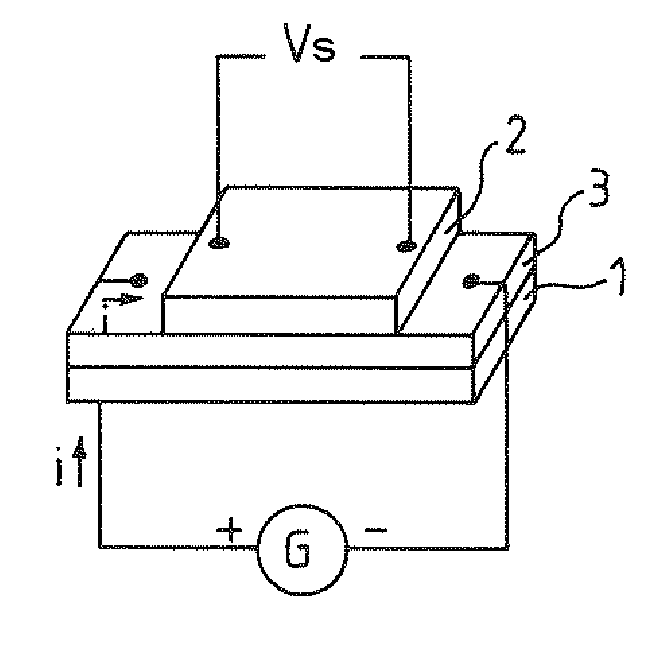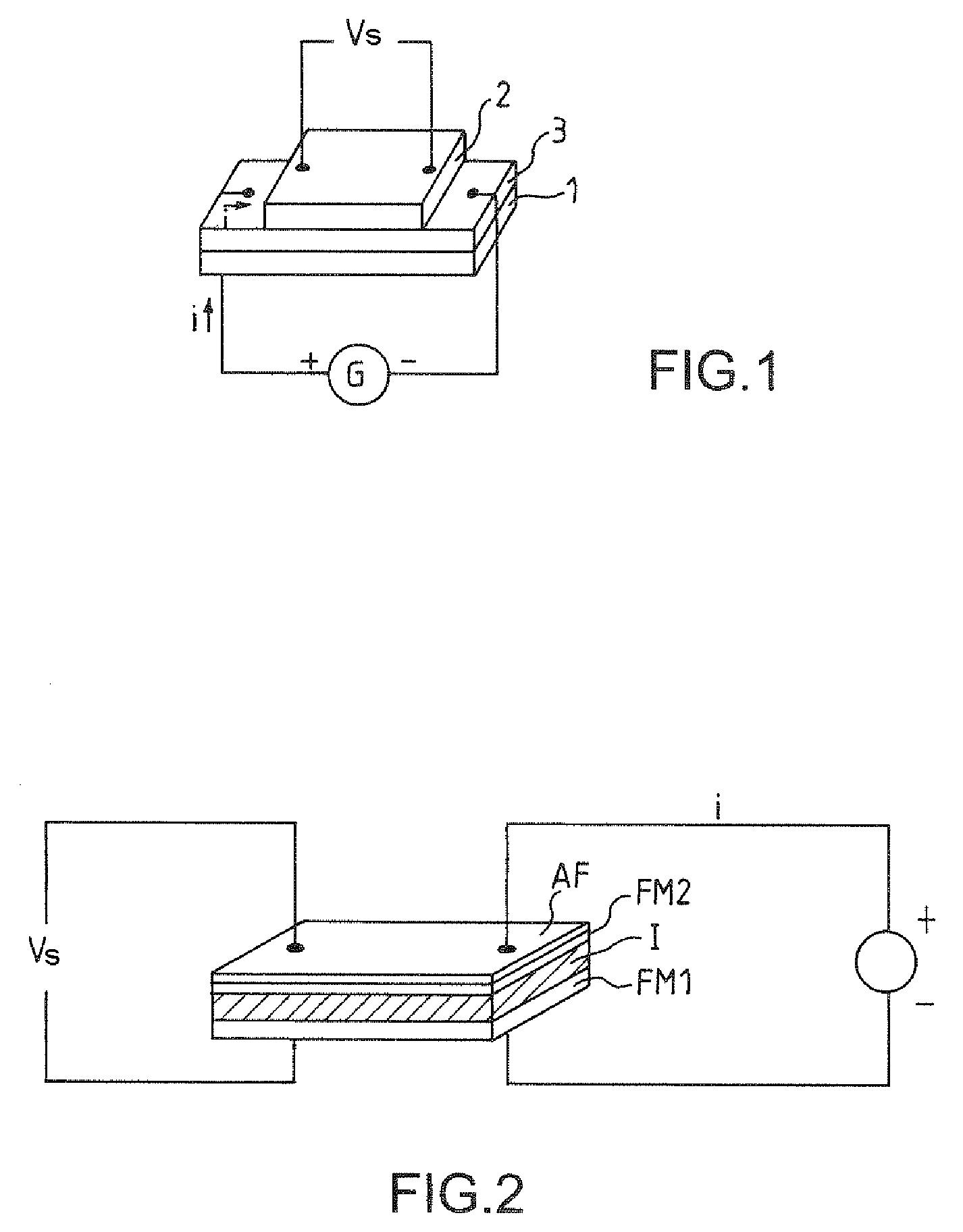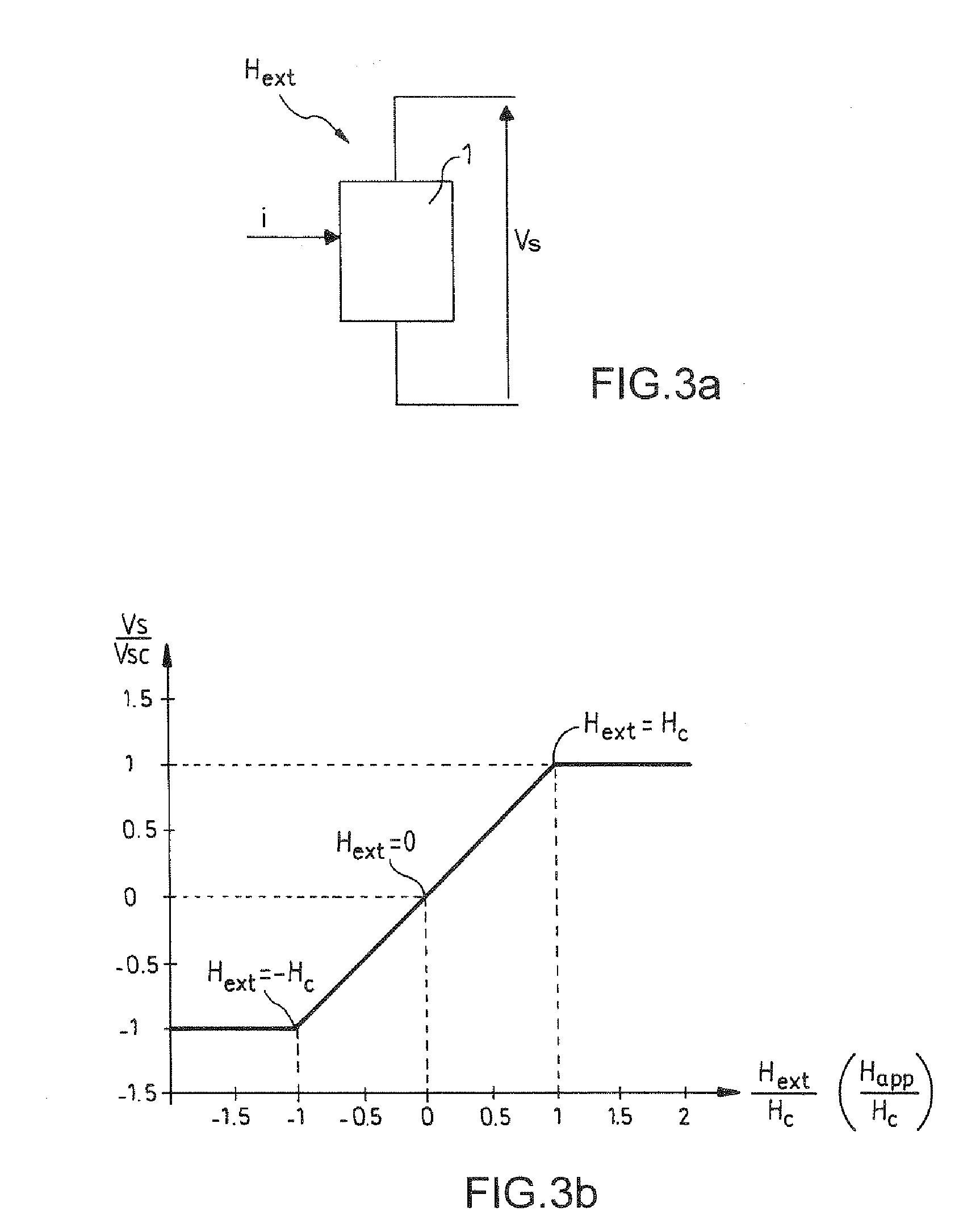Method of Measuring a Weak Magnetic Field and Magnetic Field Sensor of Improved Sensitivity
a weak magnetic field and sensor technology, applied in the field of weak magnetic field sensors, can solve the problems of troublesome, difficult to solve, and limited precision of the output signal delivered by these sensors, and achieve the effect of improving the sensitivity of magnetoresistive sensors
- Summary
- Abstract
- Description
- Claims
- Application Information
AI Technical Summary
Benefits of technology
Problems solved by technology
Method used
Image
Examples
Embodiment Construction
[0047]A sensor for measuring an external magnetic field Hext according to the invention comprises, as illustrated schematically in FIG. 4:[0048]a magnetoresistive element 10 having a magnetoresistance R;[0049]a generator 11 for generating a bias current i;[0050]means 12 for generating a modulation field Hm at a modulation frequency f derived from a clock signal Clk, delivered for example by a local oscillator 13; and[0051]a signal processing device 14 comprising a device for synchronous detection at the modulation frequency f of the output signal Vs of the magnetoresistive element 10. This electronic device delivers the result of the measurement mes(Hext) of the external field Hext.
[0052]In practice, the synchronous detection device is configured to detect the amplitude of an odd harmonic of the output signal. This harmonic is preferably the fundamental h1, detected at the modulation frequency f of the field Hm. In a variant, it is the third harmonic h3 that is detected at the frequ...
PUM
 Login to View More
Login to View More Abstract
Description
Claims
Application Information
 Login to View More
Login to View More - R&D
- Intellectual Property
- Life Sciences
- Materials
- Tech Scout
- Unparalleled Data Quality
- Higher Quality Content
- 60% Fewer Hallucinations
Browse by: Latest US Patents, China's latest patents, Technical Efficacy Thesaurus, Application Domain, Technology Topic, Popular Technical Reports.
© 2025 PatSnap. All rights reserved.Legal|Privacy policy|Modern Slavery Act Transparency Statement|Sitemap|About US| Contact US: help@patsnap.com



